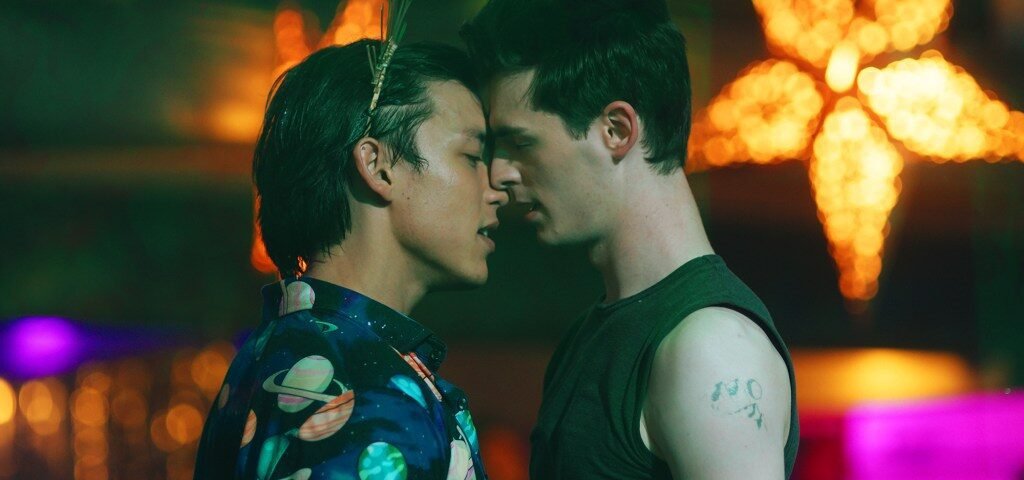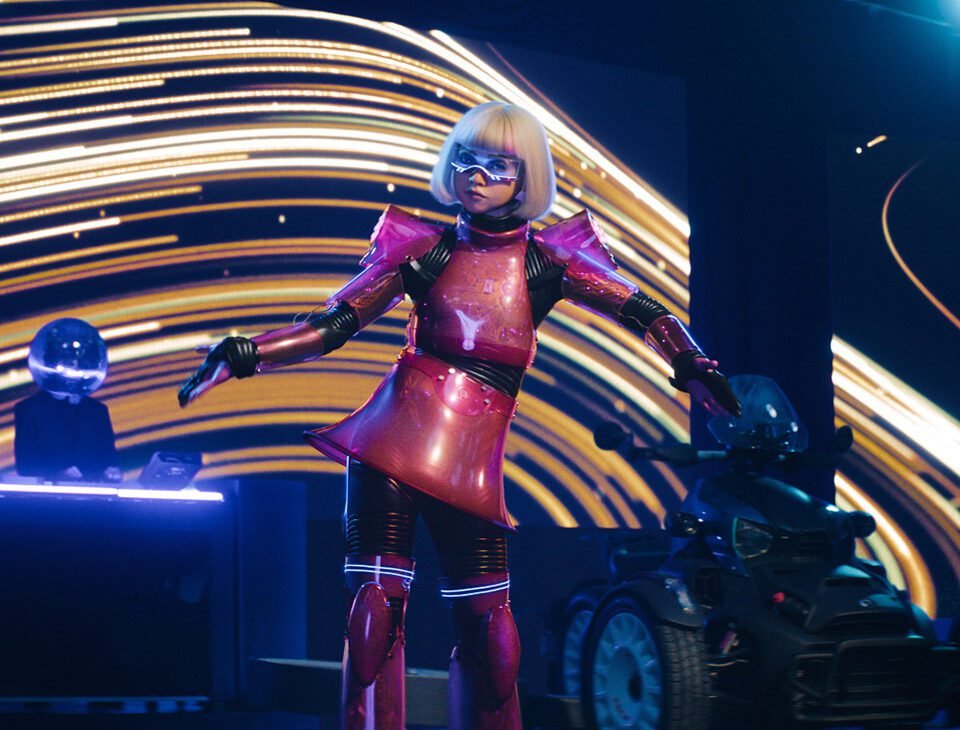


‘Damsel’ Review: Millie Bobby Brown Adds Needed Spark to Netflix Fairy Tale That Subverts Convention in Overly Familiar Ways
March 15, 2024


‘Kung Fu Panda 4’ Review: Jack Black and Awkwafina Voice Predictable but Pleasant Franchise Entry
March 16, 2024Tom Gustafson’s queer pop-disco romance imagines a circus performer and a singer-songwriter falling in love in Mexico City.
Glitter & Doom
A lot of verve but little momentum.
It isn’t every day you encounter a pop-disco musical about a buoyant aspiring circus performer and a brooding aspiring rock singer with competing Mommy issues falling in love in Mexico City against the electricized rearrangements of the Indigo Girls. And that’s not exactly lamentable, because I wouldn’t categorize English-language Glitter & Doom as necessarily essential cinema … though I also couldn’t accuse it of being anything other than original either. (Well, except for the foundational premise of opposites attracting and then ultimately clashing over dueling artistic ambitions.) Director Tom Gustafson (Were the World Mine) has crafted a sweet if plodding love story but it’s hard to truly hate on this whirling candy-colored poetic fairytale — it’s just too sincere, much like the musical source material.
Glitter (Alex Diaz) is an Ivy leaguer who has returned home to his wealthy mother’s Mexico City villa and dreams of joining the circus. He’s been groomed all his life for corporate success and his mother (Ming Na-Wen, donning a mysterious eye-patch that actually hides her character’s cancer trauma) expects him to suit up to join her company. He’s been accepted to a circus school in Paris, and in between fretting about how he’s going to break the news to his forbearer, he love-at-first-sights with Doom (Alan Cammish) at a gay club, where they sing and dance a number together as an eddying rainbow of venue lights envelop them.
Glitter & Doom has a lot of verve but little momentum. Its greatest gift to the audience is its vibrant visuals, so bright and saturated they practically pop off the screen. There’s an unreality to the beauty here that adds to the fantasy patina. The film is not as deliciously weird or gritty as the 2001 spectacular Hedwig and the Angry Inch, but you can sense the homage to John Cameron Mitchell’s classic all the same. Cinematographer Cristian Solano’s unwieldy, pirouetting camera and intense color-capture imbue the film with dazzling, nearly Almodovarian energy, and these images — from vivid cityscapes to peaceful terrain — enchant us even when the story devolves into prosaic quirkiness.
Ultimately, I never felt quite invested in whether Glitter and Doom would find happiness together — partly because their intrinsic character traits don’t do much to distinguish them from leads that have come before them in the history of filmic romances, and partly because Diaz and Cammish struggle to ignite onscreen. These two hours feel long because you never once doubt that things will coalesce in the end.
Diaz’s performance is laden with social-media-influencer artifice (not helped by his character’s tendency toward on-camera confessionals that don’t feel too different from Instagram Live posts). Cammish brings more pathos, but swallows much of his own dialogue, and many of his lines were unintelligible to me due to this muddled mumbling. Pyle, as Doom’s down-and-out mom, surprises with a deep, melodious bark of a voice, which matches Cammish’s own talented howl. Brief cameos from the Indigo Girls’ Amy Ray and Emily Saliers, The B-52’s Kate Pierson, celebrity chef Anne Burrell, Drag Race alumna Peppermint and Tig Notaro sporting a painful French accent are cute little Easter eggs for knowing viewers, but don’t add much to the filmmaking.





